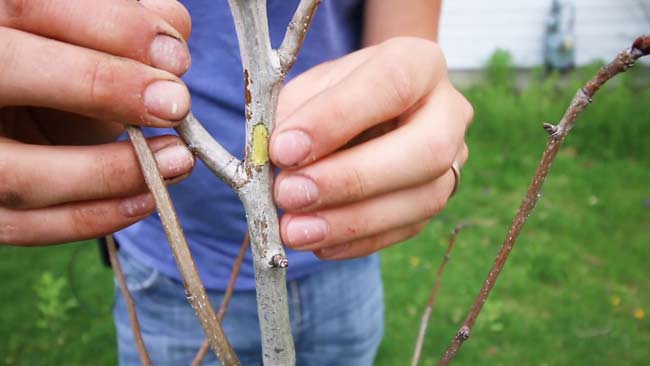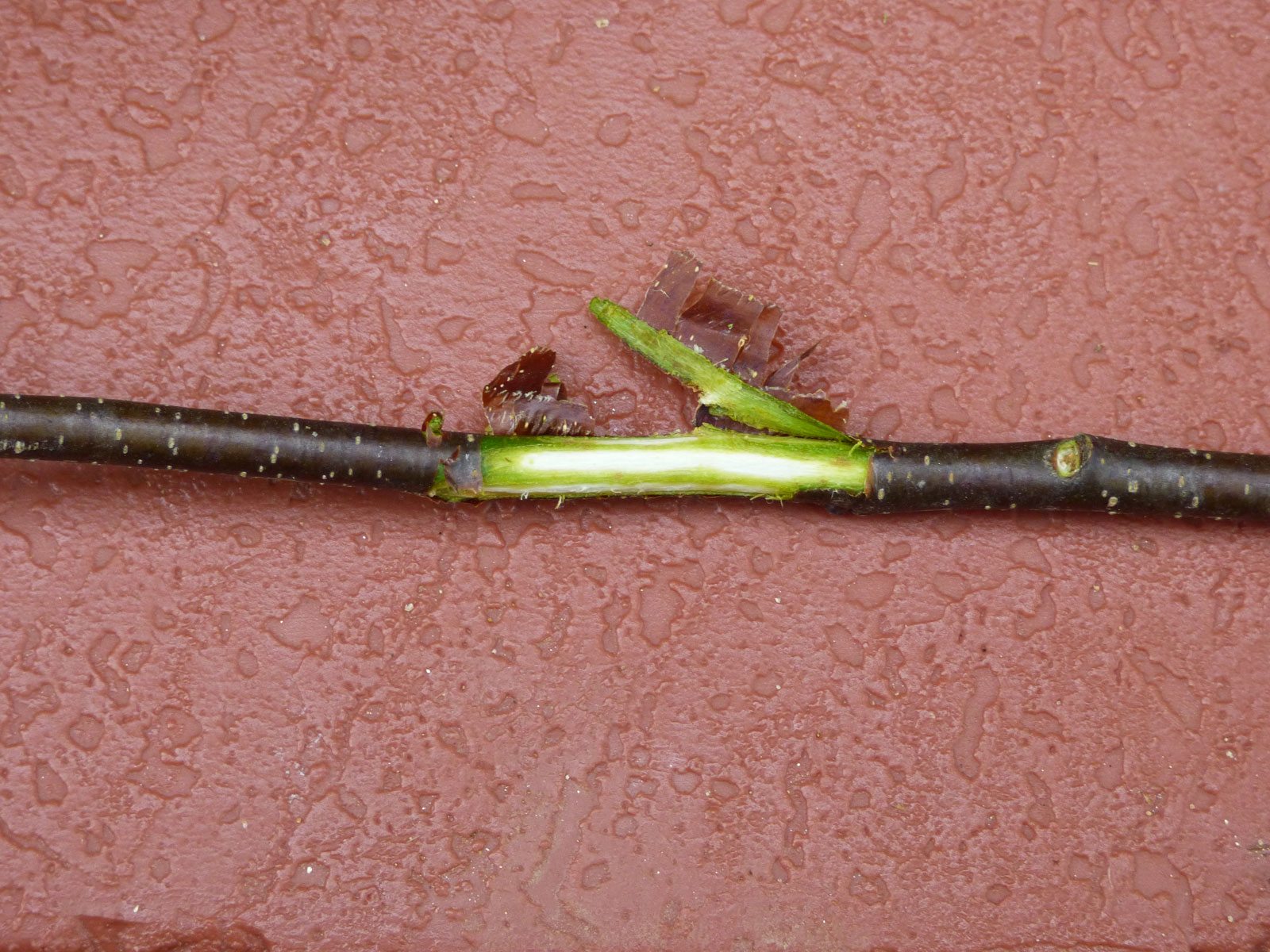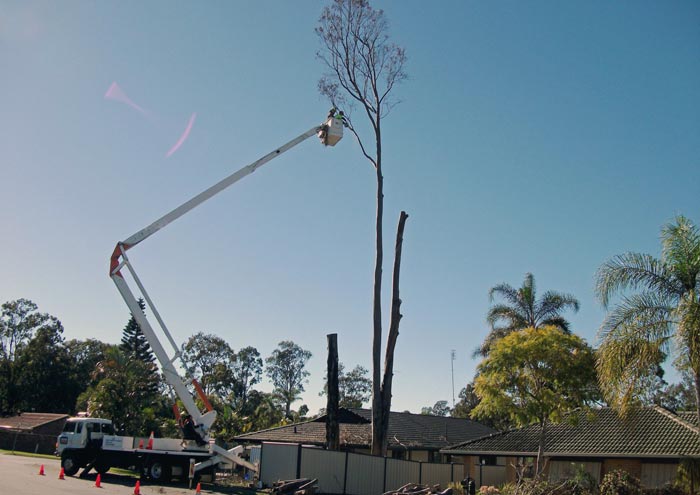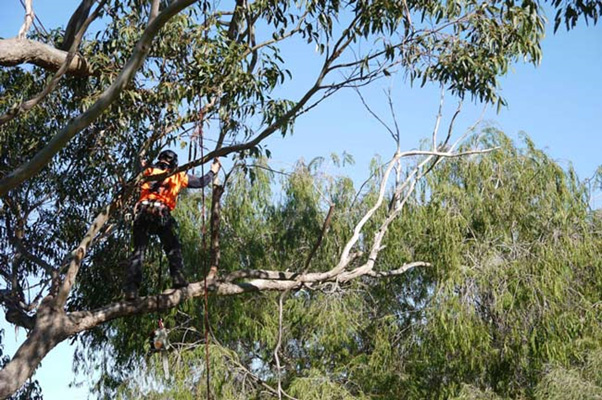Your tree may show signs of bad health by shedding its leaves and probably have a lot of dry branches. However, this doesn’t usually paint the full picture and may not necessarily mean that it’s dead. So how would you tell that your tree is actually dead or dying and needs to be removed?
The scratch test is used to tell if a tree is dead or dying by using a sharp knife to remove the outer skin from a branch or trunk. If the exposed layer is brown or white and dried out, then the tree is considered dead or dying. If it is green, the tree is still alive.
Checking whether a tree is dead or alive using the scratch test is easily the most effective way to make sure that the tree is dead and not dormant.
The Scratch Test- Step by Step
Expect to pay an average of $1.129 to have a hazardous tree removed professionally. The real range is between $450 for a small tree to $3,900 for extra-large trees. The amount you end up paying also depends on the type of tree to be removed, where it is located, how damaged it is, and when it is removed. For instance, giant oak trees generally cost more to remove as compared to American Elms.
To get an estimate from 3 local tree services, scroll to the top of the page, enter your Zip code and a few details about your tree. Local companies will then send you bids on the cost of removal.
Requirements
- A sharp knife or blade
- Climbing equipment or a harness for tall trees
Process
Using the scratch test is the only sure way to confirm that the tree is actually dead.

- Grab your knife and gently scratch off a shallow piece of bark from one of the dry branches. Make sure you don’t make a big incision that will kill the branch especially if the tree is still young or recently planted.
- Observe the exposed layer and see if it’s whitened out, brown, or completely dry like the external bark.
- If the inner layer is dry, hard or white, then that branch and probably the entire tree is dead.
- For larger, mature trees, you will have to repeat the process for all the branches that appear dry and have shed their leaves. You may need to make slightly deeper scratches for branches with thick dry bark.
- If the outer bark appears dry and brown but the inner part is still green and fresh, then the tree is probably dormant and will develop foliage with time.
Note: The scratch test may not give you the most complete picture of the status of a tree, especially if it is a mature tree with large branches and deep root systems.
Here are other signs that you need to look out for if you want to tell if a tree is dead or dormant.

Check the Roots
A tree could be dead or dying if the main roots are lifting off the ground or rotten and exposed. A weak or dead root system may also cause the tree to lean at an angle or tip over. Large dead trees with weakened or rotten roots are a potential hazard and should be removed1 if they are near a building or road.
Mushrooms or fungi
Keep an eye out for mushrooms growing at the base of the tree above the roots. Mushrooms tend to grow where there is decaying wood or bark and their presence usually means that the tree’s roots are rotten and probably dead or dying. If there are mushrooms and the tree is completely dry, then you may be dealing with a dead or dying tree.
Observe the Canopy
Most tree species should have their canopy intact (healthy leaves and branches) in the summer and spring. If the tree canopy is dry, or brown in the wrong season, then it could be a big sign that the tree is either dying or dead and should be checked by a qualified arborist. Mature trees have a predictable growing and shedding pattern and it’s usually easy to tell when something is amiss unless there are extraordinary climatic conditions such as long droughts or wildfires.
Check the Trunk
The trunk is, by far, the most indicative part when it comes to checking the health of any tree. You can tell if the tree is dead or dying if you can observe the following signs on its trunk:
- Multiple rotten spots2– Parts of the trunk are completely rotten and even have mushrooms on them.
- Hollows- the trunk has multiple hollow spots in addition to a dry or brown crown/canopy.
- The bark is peeling off from the trunk and exposing dry inner layers.
- The trunk has splits in multiple spots and where the main branches anchor.
Not all dead or rotting trees need to be removed unless they pose a danger to nearby structures and installations such as power lines, swimming pools, or roads. Dead or structurally compromised trees that are growing in the wild or where they cannot cause damage can be left alone as they also contribute to the habitat by providing shelter and other things to both animals and other trees.
Is My Tree Dormant?
Tree dormancy refers to the period when most trees go into some sort of hibernation by shedding their leaves and aren’t actively growing. Tree dormancy usually starts in fall as trees start to shed their leaves in readiness for winter where they won’t be actively growing or using as much energy as in summer or spring.
It’s easy to think that a dormant tree is dead because it has shed all its foliage and also looks a bit dried out on the bark. Doing a scratch test could reveal that the tree is quite healthy on the inside.
Tree dormancy does not have to be about the seasonal shedding of leaves and restricted growth in winter. Some tree species may become dormant for long periods but remain healthy. Such trees may appear dead in any season but will recover their foliage at some point and start growing again. It’s always advisable to consult a qualified arborist before you cut any tree because you think it’s dead.
What Do You Do with A Dead Tree?

Dead trees growing near a building or any other installation and deemed hazardous need to be removed especially before the rainy season. You can sell the logs from the dry trunk and branches as wood to a tree or lumber company in your location or turn them into firewood.
However, dead trees growing in the wild and not posing any danger to humans can be left alone as they still support local ecosystems. Birds, bees, and other animals tend to create their shelter3 in the hollows of dead tree trunks in the wild so removing them would interfere with their habitat.
Sometimes, you can also decide to leave a dead tree- especially if it’s still young- as it may recover at some point. Some tree species may dry and appear dead but recover after several months or even years. Consult an arborist if in doubt about what to do with dead tree seedlings and young trees.





What Does A Dying Tree Look Like?
If your tree has shed its leaves, and has a dried or rotting trunk, then it’s possibly dying or already dead. Other things to look for include exposed or weak roots, hollow trunks, mushrooms at the base of the tree, and weak or dead branches with no leaves. A dying tree may also lean at an angle or tip over in rough weather or when pushed as a result of a weakened root system.
Can You Revive A Dead Tree?
Dead trees can be revived if inspected and treated by a qualified arborist. Some species will recover on their own after a few years or when conditions are right. The fact that the trunk is completely dry does not mean the tree won’t’ start growing again at some point in the future. However, proper care needs to be taken for dead or dying trees to prevent further damage through rotting and pest infestation. The arborist can also advise you if it’s safe to keep the dead tree around or cut it.
Does Cutting Off Dead Branches Help A Tree?

Cutting or pruning4 dead branches off a tree helps it maintain its health even in harsh conditions. With more space between branches, the tree can access more sunlight to create nutrients for growth. At the same time, removing the unnecessary bulk on the tree’s crown will reduce the chances of it tipping over if it has a weak trunk or compromised root system.
Who Is Responsible for Dead Trees?
Landowners are responsible for dead trees on their land. You can pay a tree removal company to remove a tree from your yard as it belongs to you. Of course, you can agree to split costs with your neighbor if the dead tree is growing in the middle of the hedge or on shared land.
How Long Do Dead Trees Stay Standing
Dead trees can remain standing for many years or fall within a few days depending on the type of tree, how compromised it is, and what led to its death. Large trees that die a natural death can remain standing for many years while weaker trees can tip over after a few days.
What Causes Trees to Die?
Numerous things can cause a tree to die, including old age, pest infestation, drought, physical damage, lack of water, low soil nutrient levels or erosion, etc. This is why having your trees looked at every year is important to maintain their overall health and prevent early death.
- Virginia Williams, Debra Ricigliano, (2023) How Do You Decide When to Remove a Tree? <https://extension.umd.edu/resource/how-do-you-decide-when-remove-tree> Accessed: 15-03-2024.
- Gary W. Moorman, (2023) Tree Diseases that Create Hazards. <https://extension.psu.edu/tree-diseases-that-create-hazards> Accessed: 15-03-2024.
- Margaret Clarke, (2019) Birdwatch | Birds that are at home in tree hollows. <https://www.maitlandmercury.com.au/story/6328111/birds-nests-and-tree-hollows/> Accessed: 15-03-2024.
- Bob Westerfield, Gary L. Wade, (2022) Basic Principles of Pruning Woody Plants. <https://extension.uga.edu/publications/detail.html?number=B949> Accessed: 15-03-2024.



